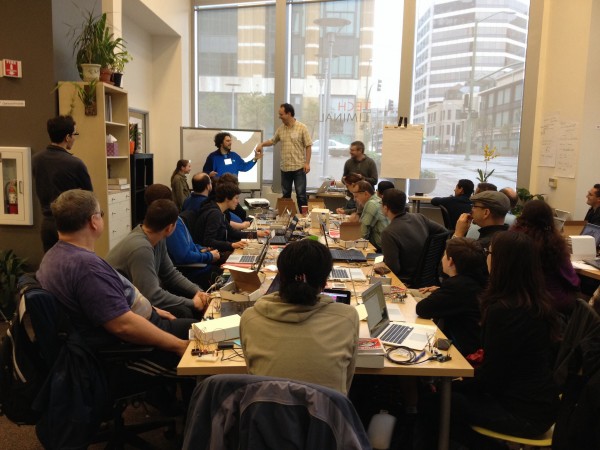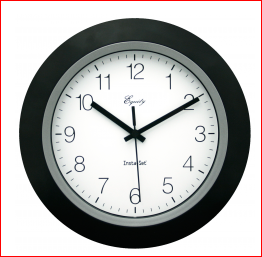Virgin Mobile has great cell phone service in San Francisco but terrible service in the East Bay. So this week I got a new Moto X phone and Aio Wireless. If you consider switching to AioWireless, send me your name and email address (mine is Lee at Lee dat org) so I can officially refer you, we’ll both get $25.
After playing with it for 2 days, the Moto X phone is super-cool:
- Lightning fast
- a battery that mostly lasts all day (2 days it ran down to 30%, 1 day I made it a wifi hotspot for an hour and it was dead at 10pm)
- Google Now is awesome-creepy-cool. I can speak things to it. Last night I said, “Ok Google Now, set an alarm for 5 minutes” and it did! “I just said, “Ok Google Now, give me directions to El Cerrito Plaza BART Station by bus” and it did!
And with Aiowireless (instead of Virgin Mobile) I actually have cell phone service! So far I haven’t found any dead spots. Ask me again in a week. Aiowireless costs just $35/month for unlimited talk, text, and 500mb of wireless data. I’m excited to think it’s all going to work out well on the cost-coverage front!
I had a blast this past weekend teaching an Arduino intensive class called Workshop Weekend: Arduino with friends to a great group of students!
Here we are putting on a little play, demonstrating how an Arduino takes input from a potentiometer and then controls a light. I got to be the Arduino!
The class was held at Tech Liminal, a great co-working and technology space in Oakland, CA.

See more photos of the event!
I’ve been earning lots of airline miles and cash over the last several years with credit card offers. I often fly on miles alone. Here’s how.
Short form:
Every three months or so I sign up for a new credit card that offers me miles. I spend the money I need to on the card, then set the card in a drawer for a few months. Then I cancel the card. When I am looking to travel, I look in my little spreadsheet to see what miles I have, and fly for free!
Long form:
- When signing up, pretty much the only important benefit is the signing bonus. Look for credit cards that offer things like “25,000 miles if you spend $2,000 in the first 3 months”. Offers for 30k or 50k miles are even better.
- Keep track of your cards by putting notes on them. I print out a document in 6 point font and tape it to the card. Notes usually say something like “spend $2k by [date] for 25k miles. 2pts/$ on restaurants. Cancel by [date] or $95 fee” Then I leave a space to write how much I’ve spent on the card.
- Always pay off your credit card in full every month. Always. If you are tempted not to, stop reading right now.
- Keep 2 cards in your wallet, an Amex and a Visa/Mastercard.
- Cancel the card before they charge you a yearly fee. Most cards say something like “$95 per year, waived for the first year”. It is rarely worth paying the yearly fee for the next year’s bonus like a free companion airline ticket or points-back.
- It mostly doesn’t matter what airline or offer you sign up for, you’ll find a way to use the miles eventually. Though I usually stay away from hotel miles because I rarely stay in them.
- To start with, just get one new card every six months. Once you start getting the hang of it, you can get a card every two months. Juggling too many cards can be complicated to manage. [July 2016 update: I was recently denied a Chase card because I had opened too many cards in the last two years, I had opened 10 cards so I guess that’s the limit… 10 cards every 2 years]
- Sign up for cards slowly, maybe a card every other month, and cancel your cards at the same rate. If you try to sign up for too many cards all at once, the companies will worry something funny is going on and they might deny you a new card.
- If you have a business, you can open cards under the business’ name and use more cards.
- Keep track of your earned miles from all your airlines and such in a document. When you have enough miles for a flight, use them!
- Sometimes you can spend your miles on Amazon.com points or trade them for cash. Those can be nice because they are easier to deal with and you probably only fly so much.
- Always consider the “exchange rate” of points to dollars when you are considering a card. Earning $0.01 per dollar is the “norm”, like on a “1% cash back” card. But when you pay attention to signing bonuses, you often earn $0.10 of value per dollar. It’s like getting 10-15% off EVERYTHING.
- Where to find the best offers keeps changing. Google “credit card offers” and you’ll find lots of them. Here are some of my go-to spots: http://milecards.com/, http://www.flyertalk.com/, http://milevalue.com/, http://boardingarea.com/viewfromthewing/, http://www.hustlermoneyblog.com/, http://www.mybanktracker.com/news/bank-deals/
- Keep track of all your cards in a document. Even the cancelled ones. It’s good to follow this stuff. And for most credit cards, you can sign up for the same offer 24 months after cancelling the old card.
- Hang onto one credit card (I keep a 2% cash back Amazon.com card) so you always know you have a card that works.
- Here are the credit card perks I pay attention to. All the other perks are usually not worth my time:
- Signing bonus
- Free first checked bag on an airline. Otherwise, checked luggage can cost $35/bag
- Can I trade the miles into dollars at a reasonable rate? Trading 100 points into $1 at Amazon.com is great
- 3% or better “cash back” might be worth paying attention to if it’s on something I spend money on
- If you are worried about your credit score, I’ve been doing this for more than five years and my FICO score was above 800 last time I checked.
So you are wondering if a cell phone network might have good service in your area. Here’s a hint: There are just a couple big companies (AT&T, Verizon, Sprint, T-Mobile) that have cell phone towers but there are many resellers. For example, the Sprint network is resold by several “mobile virtual network operators” like Credo, Virgin, Boost, etc. Here’s a list of what cell phone companies use what networks. All the secondary companies (like Virgin Mobile selling the Sprint network) are reselling a wholesale product at wholesale prices. That means they cost less and, like when you walk into a rug remnant store, sometimes parts are missing. What will work for you? I have no idea. Shopping for a new phone has been a big PITA for me. Caveat emptor!
In the US we’ve been doing the “2 year contract” thing with cell phones for a long time. There is a switch going on. Now the thing to do is:
- spend $10-$500 on a smart phone that is unlocked
- buy prepaid monthly service from your favorite provider
For example: instead of going to the AT&T store and getting a $100 Android phone and spending $100/month on a 2 year contract, you go to the Google Play Store and get a $400 Android phone and spend $50/month with Straight Talk. Note that over the course of 2 years, the second option costs $1600 instead of $2500. The downside is that most of the resellers have less friendly customer service than the “full service” providers.
Megan has an Equity Insta-Set wall clock. I just wanted to put the manual for it someplace. Here it is:
Equity Insta-Set 40222B clock manual



